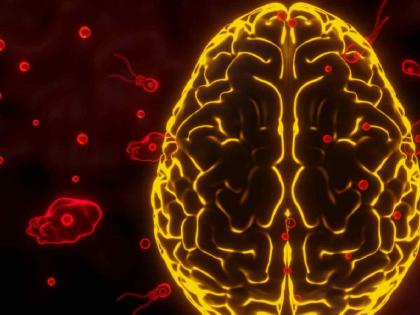Kerala Health Alert: Rare ‘Brain-Eating Amoeba’ Claims Nine-Year-Old as Kozhikode Reports Multiple Cases
By Lokmat Times Desk | Updated: August 18, 2025 14:47 IST2025-08-18T14:46:18+5:302025-08-18T14:47:18+5:30
Kerala’s health authorities have raised an alert in Kozhikode district following three consecutive reports of the rare primary amoebic ...

Kerala Health Alert: Rare ‘Brain-Eating Amoeba’ Claims Nine-Year-Old as Kozhikode Reports Multiple Cases
Kerala’s health authorities have raised an alert in Kozhikode district following three consecutive reports of the rare primary amoebic meningoencephalitis (PAM). Among the affected is a nine-year-old girl who tragically succumbed to the infection, while two others, including an infant just three months old, remain critically ill. PAM, a deadly neurological infection, is caused by Naegleria fowleri, often dubbed the “brain-eating amoeba.” This microscopic organism thrives in warm freshwater and soil and enters the human body through the nasal passages. Kerala has already reported eight confirmed cases this year, including a fatality in Thamarassery on August 14.
Health officials emphasized that the three recent cases have no identifiable common source, originating from different villages across Kozhikode. “It is unclear how the three-month-old became infected. The amoeba may have entered the body during bathing through the nose. It can also exist in dust or soil, meaning direct water exposure is not always required for infection,” stated an official. The department continues to investigate possible environmental factors. Residents are being urged to take precautions, especially around warm freshwater bodies, while authorities monitor for any additional cases in the district.
Also Read: Mumbai Rains: CSMIA Issues Flight Advisory as Heavy Downpour Triggers Delays and Diversions
Laboratory analysis revealed that while Naegleria fowleri is a known cause, another amoeba genus, Acanthamoeba, can also trigger meningoencephalitis. Experts clarified that the traditional link between water exposure and amoebic infection applies primarily to Naegleria fowleri. Infections caused by Acanthamoeba or other genera may occur without contact with contaminated water and can have incubation periods ranging from days to months. Molecular diagnostics now allow differentiation between the amoeba types, helping guide treatment protocols. This understanding emphasizes that infection prevention extends beyond water safety, as environmental exposure to contaminated soil or dust could also pose a risk.
The first PAM case in India was documented in 1971, with Kerala reporting its initial instance in 2016. Between 2016 and 2023, Kerala recorded only eight cases. However, in 2024, the state witnessed a surge with 36 confirmed infections and nine deaths. While the global fatality rate for PAM stands at around 97%, Kerala has reduced this to approximately 25% through timely detection and intervention. Notably, in July 2024, a 14-year-old boy from Kozhikode became the first Indian survivor of PAM, marking only the 11th known survival worldwide.
Experts attribute the recent increase in cases to several factors, including enhanced testing for acute encephalitis syndrome (AES), climate change, and environmental pollution. AES can result from multiple causes, including amoebic infections. Following last year’s surge, Kerala pioneered a dedicated treatment protocol and standard operating procedures for managing amoebic meningoencephalitis, becoming the first state in India to formalize such guidelines. Authorities continue to emphasize early diagnosis, preventive hygiene measures, and environmental awareness to contain the spread, while ongoing research aims to further reduce fatalities and improve survival rates in the state.
Open in app